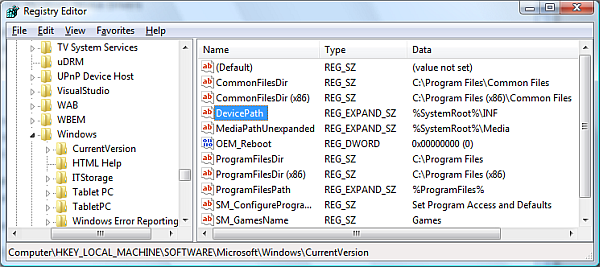How to Change the Path for Windows Device Drivers
Whenever using hardware devices in Microsoft Windows, Windows will install a device driver for each hardware device. Many devices are supported by Windows itself, especially in the latest Windows versions. But in some cases, you will need to install additional drivers. During driver installation Windows can search on the Internet for a device driver, or you will be prompted for a location where Windows can find the driver for the new hardware device.
But in some cases even supported devices are not recognized by Windows. That could be because the driver is missing or corrupt. Another option is that Windows does not look in the right place for the driver. The location where Windows looks for device drivers by default is C:\Windows\Inf (since the inf files are used to match a device with a driver).
Since the installation path for Windows can vary, this path for Windows device drivers is actually configured as %SystemRoot%\Inf. In this, the %SystemRoot% refers to an environment variable that always points to the right path for the Windows installation.
The path for Windows device drivers in the registry
The driver location is stored in the Windows registry. And the registry key that is used to store the driver path is:HKEY_LOCAL_MACHINE\Software\Microsoft\Windows\CurrentVersion\DevicePath
So if you are getting unexpected errors indicating that the device is not recognized, check the device path in the Windows registry. If the %SystemRoot%\Inf value is not present in the DevicePath, then change it to that, or add it to the path.
The DevicePath variable can also be extended with additional locations for drivers. If for example, you have a network location where you store device drivers for all PCs and hardware devices, you can add that to the variable. Just separate the path with a semicolon. E.g.: %SystemRoot%\Inf;\Drivers
OEM manufacturers also use this option to include additional drivers in the default Windows setup.
To start the Registry Editor, use the search option in the Taskbar, or press the Windows + R key to bring up the Run window and then type “regedit.exe” and press Enter.
Of course, always make a backup of the Windows registry before you make any changes!
Once you made these changes Windows should be able to find the Windows device drivers files that are present in the configured location(s).
Still can not find a driver for your device in Windows? Use the DriverFinder software to locate drivers for you automatically.
Entry Filed under: Device Drivers


Leave a Comment
Trackback this post | Subscribe to the comments via RSS Feed